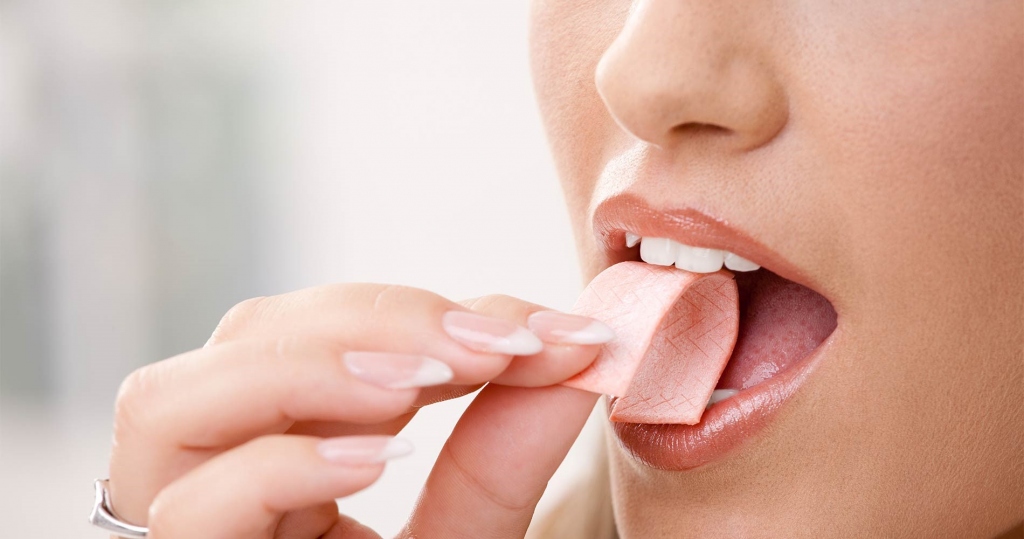Chewing gum has many benefits. Not only is it delicious, but minty flavored chewing gum can help keep your breath fresh. It also can help keep you from getting hungry as often, so it’s a mildly effective appetite suppressant.

But did you know that certain types of chewing gum can also help control plaque and limit the development of harmful bacteria in your mouth that can lead to bad breath, gum disease, discoloration of the teeth, and other unwanted problems? It’s true!
History of Gum
First of all, chewing gum has actually been around for thousands of years in one form or another. The ancient Greeks were known to chew the sap of the mastic tree, which was called “mastiche”.
In what is now Mexico and Central America, the ancient Mayan tribes took the sap of the sapodilla tree – known as the “tsiclte” – and flavored it before chewing it.
North American Indian tribes chewed the sap of spruce trees, a habit they passed on to the Pilgrims when they arrived on the continent hundreds of years later.
Chewing gum has been popular in the US and other countries for more than 100 years. For children, chewing sugary bubble gum is almost like a rite of passage.
What Is Chewing Gum?
Most commercially produced chewing gums are made from a gum base, which used to come from gum trees — most of which are grown in Southeast Asia — but today it is mostly made from synthetic materials such as elastomers, resins and waxes.
Added to this are artificial sweeteners such as sorbitol, mannitol or aspartame, as well as other flavorings and colorings, both natural and artificial.
In the manufacture of gum, the gum base ingredients are melted together in industrial furnaces, then the other ingredients are added until the mass forms a thickened dough. Machines known as extruders are then used to blend, smooth and form the gum into basic shapes, which are then flattened or molded into sticks, tablets or whatever the desired shape is.
Gum is then cooled for at least 48 hours in temperature controlled chamber so that it can set and harden. Only then is it wrapped – typically in foil to preserve freshness – then packaged and shipped.
Chewing Gum Problems
Not all chewing gums are good for your teeth. Those that are made with sugar can actually accelerate the development of bacteria in your mouth and also wear away the enamel on your teeth, making them more susceptible to tooth decay.
Sugary gums also can increase your blood sugar, affecting the release of certain hormones in your body. This can sometimes lead to irritability, confusion, anxiety and other symptoms of a “sugar crash”.
For people with dentures, loose fillings, or cracked or broken teeth, chewing gum also can be problematic. The tackiness of the gum can cause teeth to become loose, pull out fillings, or cause other issues.
Benefits of Chewing Gum
Sugarless chewing gum can actually be beneficial for your teeth, as well as for your overall health. Not only can it help prevent tooth decay, but chewing sugarless gum also increases saliva production in your mouth. This additional saliva helps wash away some of the acids that can form when you chew and break down food. So chewing gum after a meal can actually promote optimal oral health.,
The minerals found in the natural saliva that is produced when you chew sugarless gum also can help strengthen your teeth’s natural enamel, which naturally reduces your risk of developing dental cavities.
In fact, the American Dental Association recommends that people chew sugarless gum. The group even puts it seal of approval on certain brands of sugarless gums.
The ADA and Sugarless Gum
So far, the ADA has only awarded its seal of approval to sugarless gums. No chewing gum that contains sugar has received the distinction.
Gums can earn the ADA seal only after rigorous scientific testing that provides that the particular gum is effective at reducing plaque acids, promoting mineral production that strengthens teeth, and reduces cavities and/or the risk of gingivitis, or gum disease. These studies must also prove that the gum is safe for oral tissues.
This comprehensive testing is not performed by the ADA, but by the gum manufacturers themselves, who then forward their findings to the dental organization in the hopes of receiving their seal of approval.
For a complete list of chewing gums that have received the ADA seal of approval, click here.
Chewing Gum and Oral Health
While chewing sugarless gum can help eliminate plaque and reduce your risk for common oral health problems such as bad breath or cavities, it’s no substitute for daily brushing and flossing. The ADA recommends that people brush their teeth at least twice daily and floss at least once per day.
Author Bio – Greg Larsen, the author of this article writes occasionally for Thantakit, a sought after yet affordable dental clinic. If you’re on the lookout for a dentist in Bangkok, Thantakit would indeed be the perfect choice.